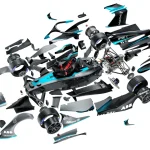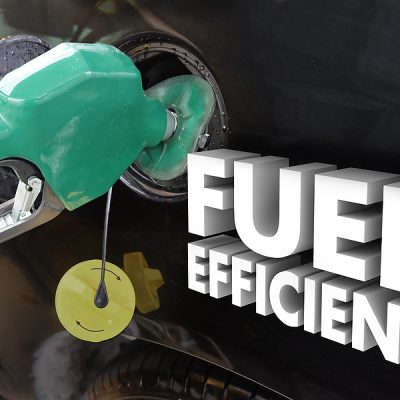Every time you slide behind the wheel and fire up your engine, your dashboard lights up like a tiny city of signals, each telling a story. Some glow briefly, others stubbornly linger, flashing warnings that can range from “all is well” to “pull over immediately.” For every driver, from rookies to seasoned petrolheads, understanding what these warning lights mean isn’t just handy — it’s crucial. They’re your car’s way of talking to you, a digital Morse code that, if ignored, could lead to costly repairs or safety risks.
This guide unpacks the most common warning lights on your dashboard—what they signify, how urgent they are, and what action you should take. Consider it your decoder ring for car care.
🔴 Red Warning Lights: Danger Zones — Stop or Act Fast!
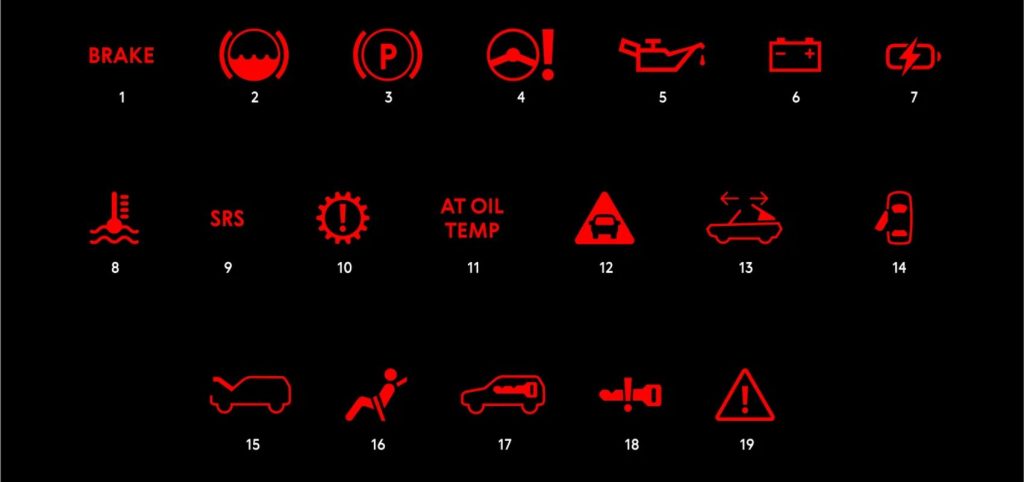
Red lights are your car’s way of shouting: “Attention! Serious issue detected.” When one appears, it’s best to respond immediately to avoid damage or danger.
Engine Oil Pressure Warning
- Icon: Oil can with a drip.
- Meaning: Oil pressure is too low — your engine might not be getting enough lubrication.
- Action: Stop the car safely and check oil level. Continuing to drive can cause severe engine damage.
Brake System Alert
- Icon: Circle with an exclamation point or “BRAKE.”
- Meaning: Could indicate low brake fluid, parking brake engaged, or brake system failure.
- Action: Check parking brake first. If off, get fluid checked ASAP and avoid driving if brakes feel weak.
Engine Temperature Warning
- Icon: Thermometer in liquid.
- Meaning: Engine overheating, which can lead to catastrophic failure.
- Action: Pull over, turn off engine, and let it cool before checking coolant levels.
Battery Charge Warning
- Icon: Battery symbol.
- Meaning: Charging system failure — alternator or battery problem.
- Action: Turn off unnecessary electronics and get vehicle checked immediately to avoid a dead battery.
🟠 Yellow or Amber Lights: Caution — Check Soon
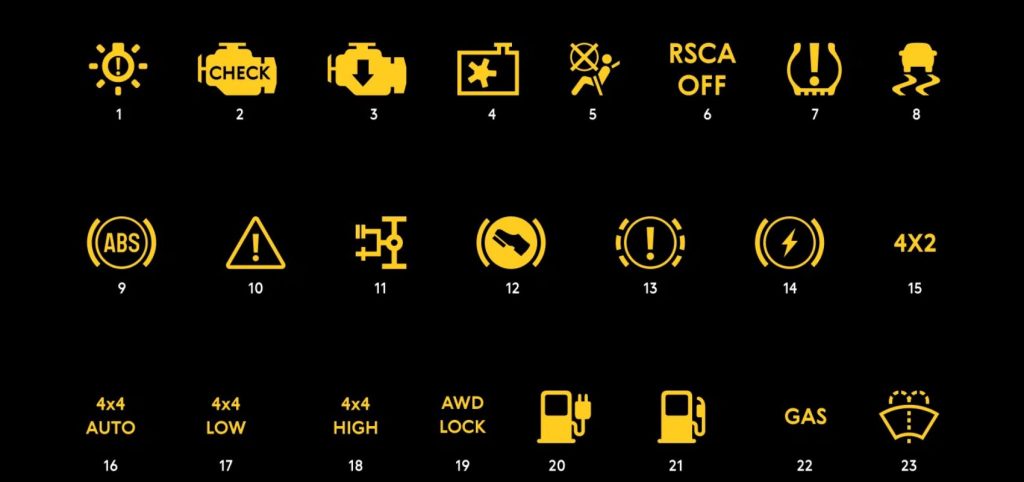
Amber lights signal a caution or non-critical fault that needs attention but usually doesn’t require immediate stopping.
Check Engine / Malfunction Indicator Light (MIL)
- Icon: Engine outline or “Check Engine.”
- Meaning: Emissions or engine performance issue detected.
- Action: Schedule a diagnostic soon. Can range from loose gas cap to serious engine problems.
Tire Pressure Monitoring System (TPMS)
- Icon: Cross-section of a tire with an exclamation point.
- Meaning: One or more tires have low pressure.
- Action: Check and inflate tires to recommended levels to ensure safety and fuel efficiency.
Traction Control or Stability Control
- Icon: Car with squiggly lines behind it.
- Meaning: System is active or has a fault.
- Action: Usually normal when flashing during slippery conditions. If persistent, get system checked.
Service Vehicle Soon / Maintenance Required
- Icon: Wrench or “Service Engine Soon.”
- Meaning: Scheduled maintenance due or minor fault detected.
- Action: Book a service appointment to avoid bigger issues.
🟢 Green and Blue Lights: Info and Status Indicators
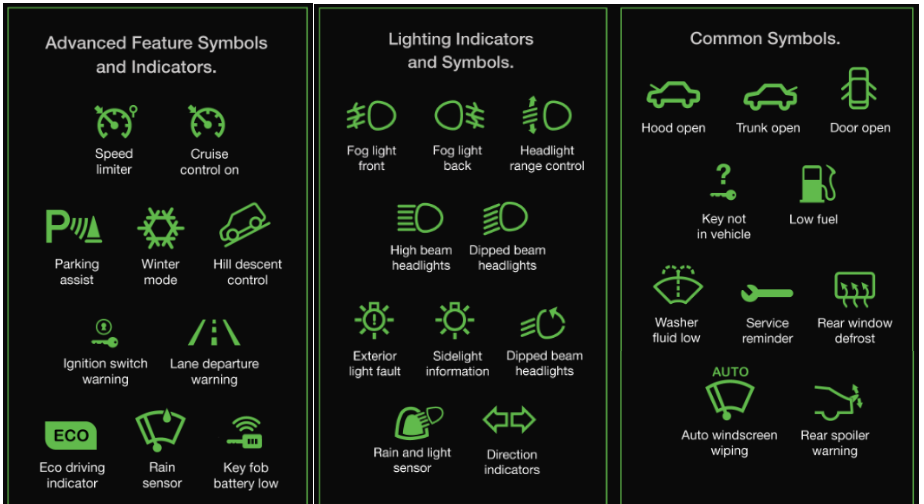
Green or blue lights are generally informational, indicating systems are active or operating normally.
High Beam Indicator
- Icon: Blue headlight with rays.
- Meaning: High beam headlights are on.
- Action: Use appropriately; dim when approaching other vehicles.
Turn Signal Indicators
- Icon: Left or right arrows.
- Meaning: Turn signals activated.
- Action: Blink off after completing your turn.
🟡 Flashing Lights: Urgency in Disguise
Flashing lights often denote urgent warnings or alerts.
Check Engine Light Flashing
- Meaning: Severe engine misfire causing damage to the catalytic converter.
- Action: Reduce speed and visit mechanic immediately.
ABS Warning Light Flashing or On
- Meaning: Anti-lock braking system has a fault; normal brakes still work but ABS might be disabled.
- Action: Get the system checked to restore full safety features.
🚦 Quick Tips to Decode Your Dashboard
- Consult your owner’s manual: It’s the best source tailored to your car model.
- Don’t panic: Some lights can mean minor issues, but don’t ignore them.
- Act promptly: The longer you wait, the higher the risk of damage.
- Use apps and OBD-II scanners: Affordable tools can read fault codes and give you real-time insights.
Final Thought: Your Dashboard is Your Car’s Voice
Your car’s warning lights aren’t just annoyances—they’re vital communication tools. Learning to read them turns you from a passenger into a knowledgeable driver who understands their machine’s needs. The sooner you respond, the better your car will perform, stay safe, and keep you on the road for years to come.
Next time a warning light flickers on, listen closely—it just might save your engine, your wallet, or even your life.

